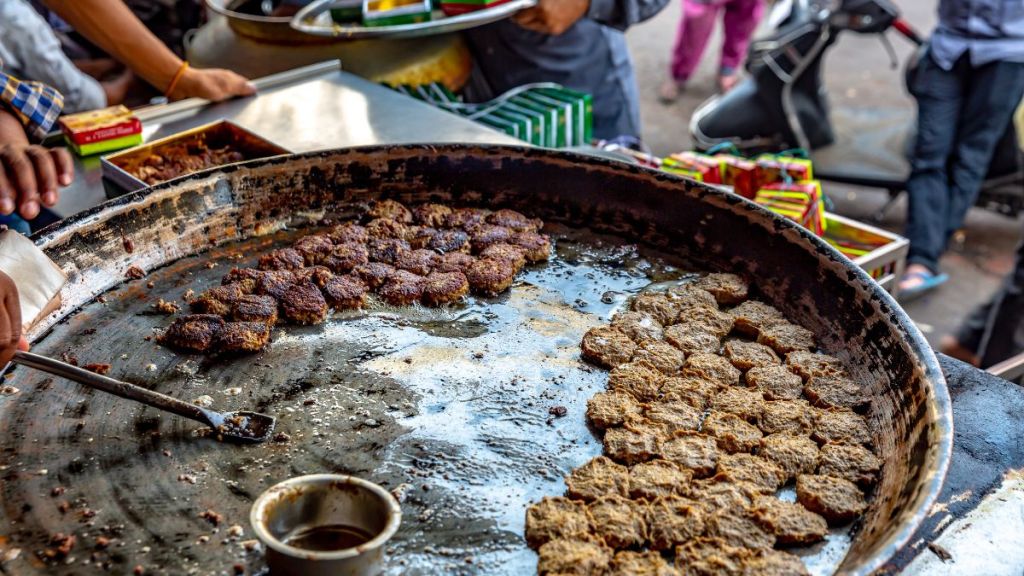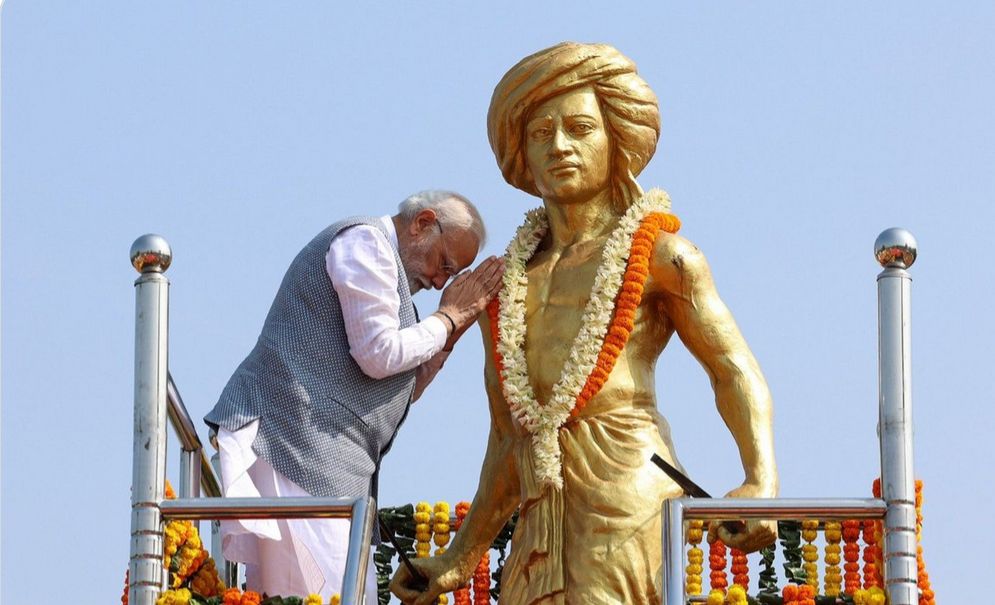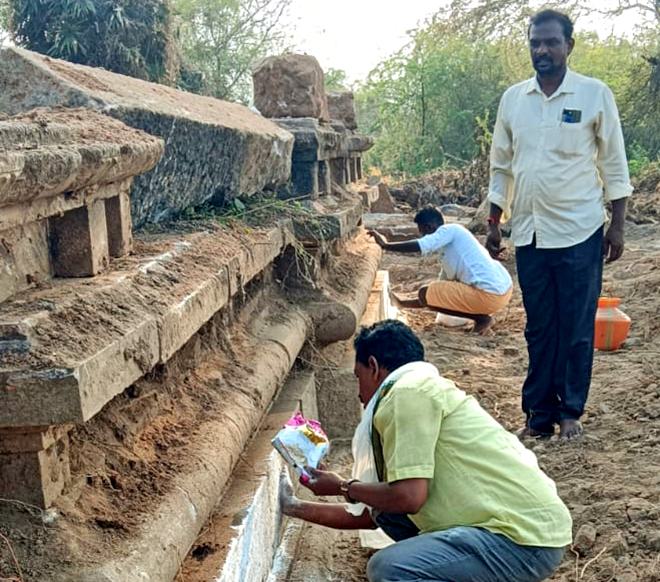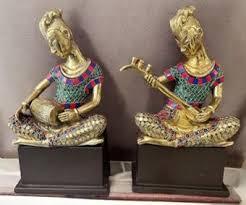UNESCO Creative Cities Network (UCCN)

- 18 Jun 2025
In News:
Lucknow has officially submitted its nomination to be recognised as a “City of Gastronomy” under the UNESCO Creative Cities Network (UCCN), aiming to join Hyderabad as the only other Indian city to hold this title in the gastronomy category.
About the UCCN
- Established: 2004
- Purpose: To promote international cooperation among cities that use creativity as a key element for sustainable urban development.
- Focus Areas: Literature, Music, Crafts & Folk Arts, Design, Film, Media Arts, and Gastronomy.
- Key Goals:
- Leverage the creative economy for sustainable development.
- Encourage cultural diversity and resilience against urban challenges like climate change and inequality.
- Promote collaboration across public, private, and civil society sectors.
UCCN and Sustainable Development
- UCCN supports the UN Sustainable Development Goals (SDGs) by positioning culture and creativity at the heart of local development policies and planning.
- Member cities are expected to create innovation hubs, support local artists, and preserve cultural heritage.
India and the UCCN
As of 2023, 10 Indian cities are part of the network:
- Hyderabad – Gastronomy
- Jaipur – Crafts and Folk Arts
- Varanasi – Music
- Chennai – Music
- Mumbai – Film
- Srinagar – Crafts and Folk Arts
- Kozhikode – Literature
- Gwalior – Music (Recent entries include Kozhikode and Gwalior)
Lucknow’s Nomination: Highlights
- Nominated Title: City of Gastronomy
- Coordinated by: Department of Tourism and Culture, Lucknow
- Culinary Heritage: Awadhi cuisine, including dishes like nihari, kebabs, biryani, khasta, kulfi, jalebi, and puri-sabzi.
- Cultural Value: The city’s food is not just a tradition but a living culinary ecosystem, passed down through generations and practiced by diverse communities.
- Dossier Preparation: By renowned heritage conservationist Abha Narain Lambah.
- Verification: A field visit by UNESCO is expected as part of the evaluation process.
Global Cities of Gastronomy (Examples)
- Alba (Italy)
- Arequipa (Peru)
- Bergen (Norway)
- Belem (Brazil)
- Bendigo (Australia)
These cities, like Hyderabad, are recognised for their distinctive and sustainable culinary traditions.
Servants of India Society
- 15 Jun 2025
In News:
Tensions have resurfaced between Gokhale Institute of Politics and Economics (GIPE) and the Servants of India Society (SIS) over control of a joint bank account and allegations of financial misconduct. This has brought attention back to the legacy and functioning of the historic SIS.
About Servants of India Society (SIS)
- Founded: June 12, 1905
- Founder: Gopal Krishna Gokhale, with G.K. Devadhar, A.V. Patwardhan, and N.A. Dravid
- Location: Fergusson Hill, Pune, Maharashtra
- Headquarters: Pune, with branches in Chennai, Mumbai, Nagpur, Allahabad, etc.
Objectives:
- To train a dedicated cadre of national workers for selfless service to the nation.
- Promote political education, social reform, and public service.
- Work towards upliftment of underprivileged communities, including rural and tribal populations.
- Achieve social change through constitutional and moderate means, not violent agitation.
Membership and Structure:
- Members undergo a five-year training period and vow to serve on modest salaries.
- Considered “young missionaries of Indian nationalism.”
- Notable Members:
- V.S. Srinivasa Sastri (later president after Gokhale’s death in 1915)
- Hriday Nath Kunzru
- A.V. Thakkar
Ideological Basis:
- Strong emphasis on constitutionalism, moderation, and liberalism.
- Aimed to create a disciplined, morally upright civil society to complement political struggle.
About Gopal Krishna Gokhale:
- Born: May 9, 1866 | Died: February 19, 1915
- Moderate leader of the Indian National Congress and a liberal reformer.
- Influenced by Justice M.G. Ranade and Western political thought.
- Advocated for gradual self-governance and saw value in British-initiated modernization.
- Played a pivotal role in the Morley-Minto Reforms (1909).
- Mentor to Mahatma Gandhi and known for his economic insight and powerful oratory.
Sant Kabirdas
- 12 Jun 2025
In News:
11th June 2025 marked the 648th birth anniversary of Sant Kabirdas, one of India’s most revered 15th-century Bhakti saints.
Place of Birth: Varanasi, Uttar Pradesh
Birth Period: Circa 1440 CE, raised in a Muslim weaver family
Philosophy and Teachings
- Nirguna Bhakti: Kabir rejected idol worship and sectarian divisions, instead preaching devotion to a formless, universal God (Nirguna Brahman).
- Social Reform: He denounced casteism, rituals, and blind faith, stressing ethical conduct, humility, and self-realization.
- Inner Divinity: He believed God resides within and taught seekers to seek truth through introspection (Antar-drishti) rather than temple rituals.
- Language and Style:
- Composed in Sant Bhasha, a blend of local dialects understood across religions.
- Created Ulatbansi verses — paradoxical or "upside-down sayings" — challenging conventional wisdom.
Literary Legacy
- Major Works: Bijak, Sakhi Granth, Kabir Granthavali, Anurag Sagar
- Scriptural Inclusion:
- His verses appear prominently in the Adi Granth Sahib compiled by Guru Arjan Dev.
- Adopted by various traditions:
- Kabir Bijak (Kabirpanth, UP)
- Kabir Granthavali (Dadupanth, Rajasthan)
Impact and Influence
- Kabir Panth: A spiritual sect founded on his teachings, still active in North India.
- Sikhism: Deeply influenced Guru Nanak; Kabir’s dohas are integrated into Guru Granth Sahib.
- Cross-Religious Appeal: Respected by both Hindus and Muslims, he is a symbol of India’s syncretic spiritual culture.
- Other Sects: Influenced Dadu Panthis and Nirguna Bhakti traditions across India.
Contemporary Relevance
- Religious Harmony: In a climate of polarization, Kabir’s teachings offer a path of unity and spiritual inclusivity.
- Social Justice: His resistance to caste hierarchy echoes India’s constitutional values of equality and dignity.
- Sustainable Living: His emphasis on simplicity and contentment aligns with ecological and minimalist principles.
- Spiritual Humanism: He stressed conduct over ritual, making his message resonate across belief systems in today’s pluralistic society.
Bhagwan Birsa Munda

- 11 Jun 2025
In News:
On his 125th death anniversary (Balidan Diwas), the Prime Minister of India paid tribute to Bhagwan Birsa Munda, hailing his pioneering role in tribal empowerment and anti-colonial resistance.
Early Life and Identity
- Born: 15 November 1875, Ulihatu, Chotanagpur Plateau (now in Jharkhand).
- Tribe: Munda.
- Title: Revered as “Dharti Aaba” (Father of the Earth).
- Education: Attended Christian missionary schools in Chaibasa; later rejected colonial influence and converted to Vaishnavism, blending it with tribal spirituality.
- Founder of: The Birsait sect, advocating moral reform and cultural awakening among Adivasis.
Role in Freedom Struggle & Tribal Mobilisation
Resistance Against Exploitation:
- Zamindari System: Opposed British-imposed land systems that dismantled the Khuntkatti tribal land tenure, dispossessing tribals and reducing them to bonded labourers.
- Beth Begari: Led resistance against forced labour and revenue policies.
- Forest Rights: Fought against British encroachment and resource extraction in forests.
Cultural and Spiritual Renaissance:
- Condemned social evils like black magic and alcoholism.
- Mobilised tribals using tribal songs, attire, drums, and community gatherings.
- Advocated tribal self-rule and cultural pride against the oppression by Dikus (outsiders).
Ulgulan Movement (1895–1900): The Great Tumult
- Nature: A widespread anti-colonial rebellion across present-day Jharkhand, Odisha, and Bengal.
- Strategy: Guerrilla warfare, targeting British outposts, churches, and police stations.
- Slogan: “Abua Raj setar jana, Maharani Raj tundu jana” (Let the rule of our people begin, let the Queen’s rule end).
- Emphasized a vision of egalitarian tribal raj rooted in indigenous governance systems.
Arrest, Martyrdom, and Legacy
- Arrested: 1895; Died: 9 June 1900 in Ranchi Jail under mysterious circumstances.
- Though the rebellion was crushed, it led to the Chotanagpur Tenancy Act, 1908, securing tribal land rights.
Recognition and Legacy
- Declared as “Bhagwan” (Lord) by tribal communities for his cultural leadership and resistance.
- Institutions named in his honour: Birsa Agricultural University, Birsa Institute of Technology, etc.
- November 15 (birth anniversary) declared Janjatiya Gaurav Diwas (Tribal Pride Day) in 2021 by the Government of India.
- Symbol of tribal assertion, indigenous identity, and early resistance to colonialism in India.
Raja Bhabhut Singh Honoured
- 09 Jun 2025
In News:
In June 2025, the Madhya Pradesh Government held a special Cabinet meeting at Pachmarhi, renaming the Pachmarhi Wildlife Sanctuary after Raja Bhabhut Singh, a lesser-known but formidable tribal freedom fighter of the 1857 revolt.
About Raja Bhabhut Singh
- Lineage: Belonged to the Jagirdar family of Harrakot Raikheri, descended from Thakur Ajit Singh. His grandfather, Thakur Mohan Singh, had allied with Peshwa Appa Saheb Bhonsle of Nagpur during the 1819–20 resistance against the British.
- Role in 1857 Revolt:
- A key Gond tribal leader with control over Jabalpur and the Satpura hills.
- Employed guerrilla warfare tactics in the Satpura forests, using deep geographical knowledge to harass British forces.
- Maintained close ties with Tatya Tope, a prominent national leader.
- Martyrdom:
- British deployed the Madras Infantry to capture him.
- He was executed in 1860, and is remembered in Korku tribal folklore.
- Known as the "Shivaji of Narmadachal" for his resistance strategies.
Pachmarhi Wildlife Sanctuary (Now Raja Bhabhut Singh Sanctuary)
- Located in the Satpura mountain range, central Madhya Pradesh, within the Deccan Peninsula biogeographic zone.
- Highest point: Dhoopgarh (1,352 m).
- Forms part of the Satpura Tiger Reserve, along with:
- Satpura National Park
- Bori Wildlife Sanctuary
- Key Biodiversity Zone in Central India.
Korku Tribe Overview
- Region: Mainly in Madhya Pradesh, Chhattisgarh, and Melghat (Maharashtra).
- Occupation: Traditionally agriculturalists; introduced potato and coffee cultivation.
- Society: Patrilineal communities led by traditional headmen.
- Culture:
- Practice ancestral worship through memorial stones called Munda.
- Rich in oral traditions, which preserve the memory of tribal icons like Raja Bhabhut Singh.
Discovery of 800-Year-Old Pandya-Era Shiva Temple

- 08 Jun 2025
In News:
An 800-year-old Shiva temple of the later Pandya period has been unearthed at Udampatti, a village in Melur taluk, Madurai district, Tamil Nadu.
Key Highlights:
- Discovery: Foundation of a later Pandya period Shiva temple (dated to 1217–1218 CE) unearthed accidentally by children.
Architectural Insights:
- Only the stone base of the temple (north and south sides) survives.
- Identified as a Shaivite temple using foundation engravings and reference to Silpa Sastram.
Inscriptions & Historical Significance:
- Inscriptions deciphered by C. Santhalingam (Pandya Nadu Centre for Historical Research).
- Temple identified as Thennavanisvaram, located in ancient Attur (present-day Udampatti).
- “Thennavan” was a Pandya royal title, suggesting direct patronage.
Key Inscriptions (1217–18 CE):
- A sale deed records the transfer of a waterbody named Nagankudi along with wet/dry land.
- Seller: Alagaperumal, chieftain of Kalavalinadu
- Buyer: Nambi Perambala Kuthan alias Kangeyan
- Sale amount: 64 kasu (coins)
- Tax revenue from the land assigned to the temple for daily expenses, indicating its financial independence.
Archaeological Relevance:
- Confirms ancient village name (Attur), showcasing socio-economic practices during the Later Pandya period.
- Highlights temple economy, land-water rights, and administrative structures.
Pandya Dynasty
- One of the Three Crowned Tamil Dynasties (alongside Cholas and Cheras).
- Capital: Initially Korkai, later Madurai.
- Early Pandyas active since 4th century BCE; Later Pandyas (1216–1345 CE) saw a golden age under Maravarman Sundara Pandyan.
- Controlled parts of Sri Lanka, Telugu regions, and had trade links with Rome & Southeast Asia.
- Symbol: Fish
Cultural Contributions:
- Patronage of Sangam literature, Shaivism, Vaishnavism, Jainism.
- Temples: Meenakshi Temple (Madurai), Nellaiappar Temple (Tirunelveli).
- Promoted Tamil arts, Bharatanatyam, and education.
Decline:
- Succumbed to Chola, Hoysala conflicts and Delhi Sultanate invasions.
- Madurai Sultanate (1335) and later Madurai Nayak dynasty (1529) succeeded their rule.
Ahilyabai Holkar
- 31 May 2025
In News:
On the 300th birth anniversary of Maharani Ahilyabai Holkar, the Prime Minister will participate in the Mahila Sashaktikaran Maha Sammelan in Bhopal to honour her enduring legacy.
Historical Background
- Born: 31 May 1725
- Ruled: Malwa region (1767–1795) as part of the Maratha Confederacy
- Dynasty: Holkar
- Capital: Maheshwar (now in Madhya Pradesh)
Initially serving as a regent, Ahilyabai Holkar became the sovereign ruler after her husband and father-in-law’s deaths. Her rule is widely regarded as the golden age of the Holkar dynasty.
Governance and Administrative Reforms
- Ahilyabai was known for her equitable justice system, exemplified by the sentencing of her own son for a capital crime.
- She abolished discriminatory practices, such as the law confiscating property from childless widows.
- Courts for dispute resolution were established, and she remained accessible to the public, holding daily audiences.
- She broke gender norms by not observing purdah, a rare move for female rulers of the time.
Military Leadership
- Trained under Malhar Rao Holkar, she led her forces in battle.
- Appointed Tukoji Rao Holkar (Malhar Rao’s adopted son) as army commander.
- In 1792, she engaged a French officer, Chevalier Dudrenec, to modernize her army by establishing four battalions.
Cultural and Architectural Contributions
- A patron of literature and arts, she invited scholars like Moropant, Ananta Gandhi, and Khushali Ram to her court.
- Promoted craft and industry, notably founding the Maheshwar textile industry—famous today for Maheshwari sarees.
- Commissioned the construction and restoration of hundreds of Hindu temples and dharamshalas across India.
- Her most iconic act was the renovation of the Kashi Vishwanath Temple in Varanasi in 1780.
- Also contributed to infrastructure development, including roads, wells, forts, and rest houses.
Titles and Recognition
- Referred to as ‘Punyashlok’, meaning one as pure as sacred chants.
- British historian John Keay called her the ‘Philosopher Queen’.
Demise and Succession
Ahilyabai passed away on 13 August 1795 at the age of 70. She was succeeded by Tukoji Rao Holkar, who later abdicated in favour of Jaswant Rao Holkar. Jaswant Rao remained the last Holkar to rule independently until 1804.
Dokra Artwork

- 18 Feb 2025
In News:
During a recent diplomatic visit, Prime Minister Narendra Modi gifted French President Emmanuel Macron and the First Lady symbolic Indian artifacts — a Dokra artwork and a silver hand-engraved mirror — showcasing India’s rich heritage of tribal and fine metal craftsmanship.
Key Highlights:
Dokra Art: A Living Tradition
- Dokra, also known as Dhokra, is a non-ferrous metal casting craft that employs the lost-wax technique, practiced for over 4,000 years.
- It is predominantly practiced by Ojha metalsmiths and DhokraDamar tribes, across Chhattisgarh, Jharkhand, Odisha, West Bengal, and Telangana.
- Notable for its seamless brass sculptures, each Dokra artifact is cast using a single-use clay and wax mould, ensuring that no two pieces are identical.
- Dokra items include figurines, utensils, jewelry, and religious motifs, often reflecting tribal life and nature.
Historical Significance:
- The “Dancing Girl” of Mohenjo-Daro (from the Harappan Civilization) is considered one of the earliest examples of Dokra-style metal casting, underlining its archaeological and civilizational importance.
Craftsmanship Features:
- The casting process takes nearly a month per piece, reflecting the labour-intensive and skilled nature of the art.
- Dokra is globally recognized for its sustainability, aesthetic uniqueness, and its ability to merge function with folklore.
